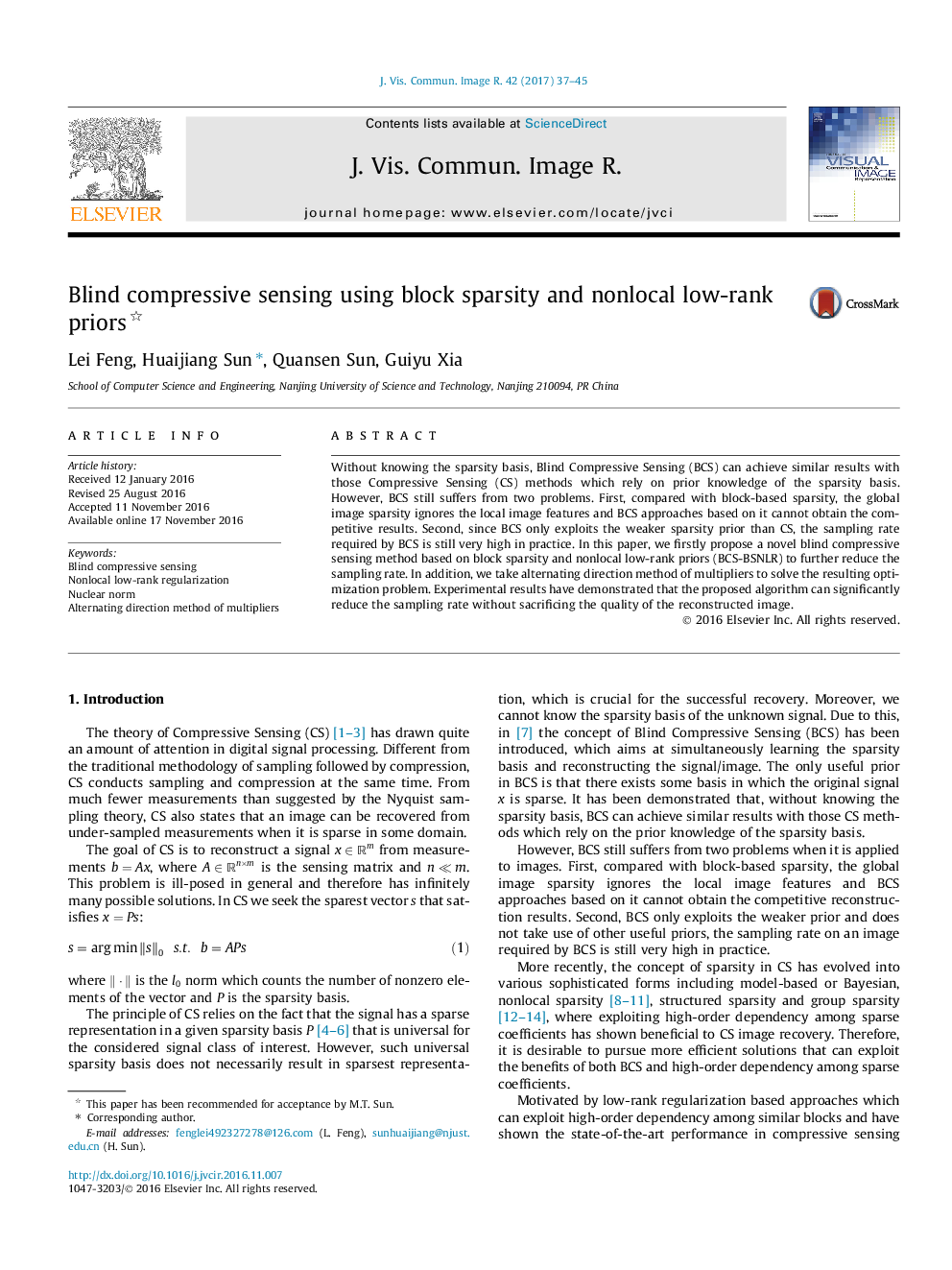| کد مقاله | کد نشریه | سال انتشار | مقاله انگلیسی | نسخه تمام متن |
|---|---|---|---|---|
| 4969335 | 1449934 | 2017 | 9 صفحه PDF | دانلود رایگان |
- A novel BCS method using block sparisty and nonlocal low-rank priors is proposed.
- The images in our model are divided into overlapping blocks to reduce artifacts.
- ADMM can efficiently solve the resulting complicated optimization problem.
- Our model can greatly reduce the sampling rate without sacrificing the quality.
Without knowing the sparsity basis, Blind Compressive Sensing (BCS) can achieve similar results with those Compressive Sensing (CS) methods which rely on prior knowledge of the sparsity basis. However, BCS still suffers from two problems. First, compared with block-based sparsity, the global image sparsity ignores the local image features and BCS approaches based on it cannot obtain the competitive results. Second, since BCS only exploits the weaker sparsity prior than CS, the sampling rate required by BCS is still very high in practice. In this paper, we firstly propose a novel blind compressive sensing method based on block sparsity and nonlocal low-rank priors (BCS-BSNLR) to further reduce the sampling rate. In addition, we take alternating direction method of multipliers to solve the resulting optimization problem. Experimental results have demonstrated that the proposed algorithm can significantly reduce the sampling rate without sacrificing the quality of the reconstructed image.
Illustrations of block sparsity and nonlocal low-rank regularizations based BCS approach (BCS-BSNLR). First, obtain an estimate image from sensing matrix and measurements. Second, for each similar block group, estimate the sparsity basis and corresponding coefficient matrix via K-SVD method. Third, apply sparse and low-rank constraints to each group matrix. Then reconstruct the image form these improved group matrices and sensing matrix.104
Journal: Journal of Visual Communication and Image Representation - Volume 42, January 2017, Pages 37-45
